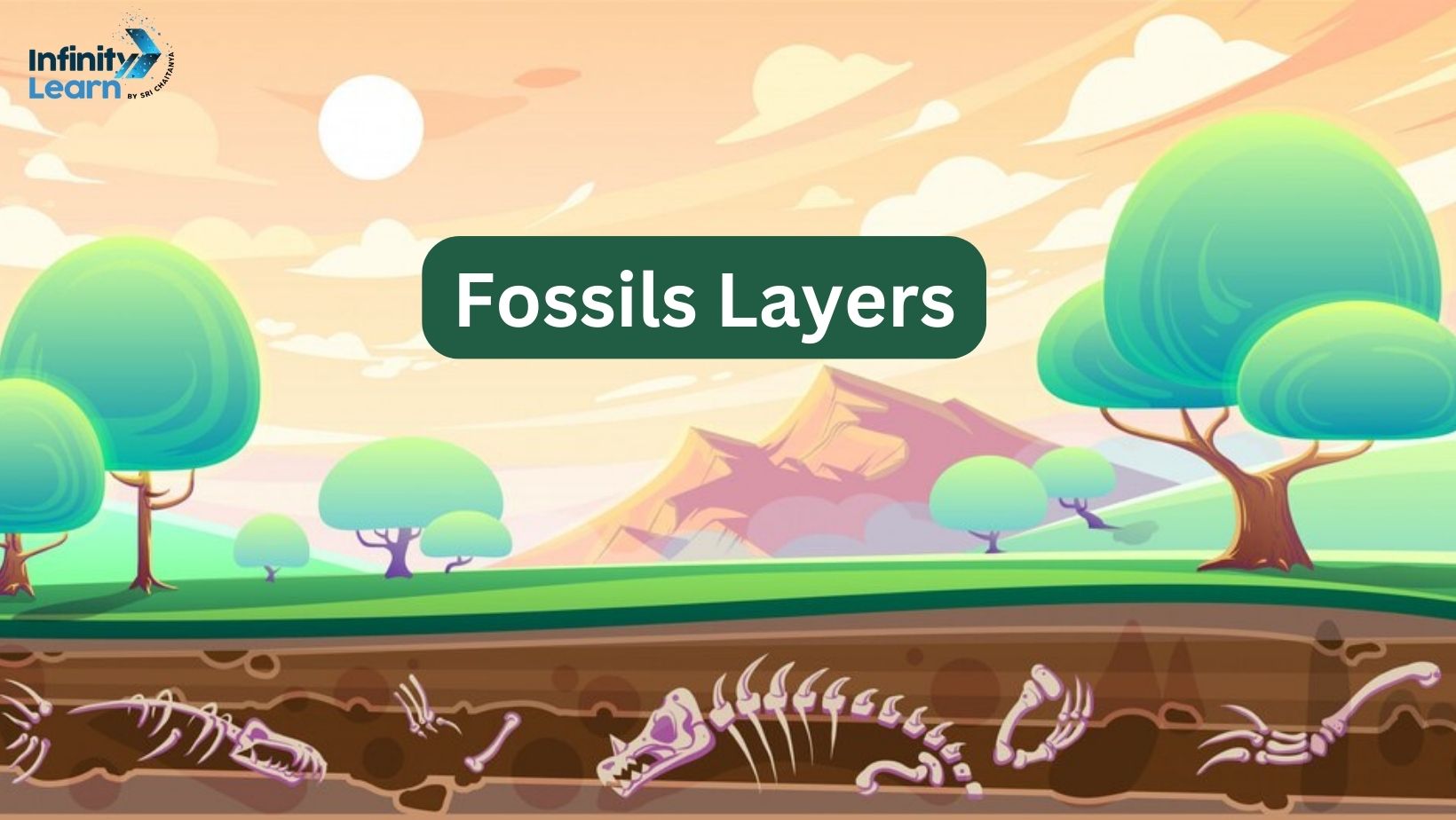Fossil layers are made of fossils found in sedimentary rock. Sedimentary rock is formed when layers of sediment pile up and get pressed together over time.
Also Check: Soil
What Is a Fossil?
Fossils are what’s left of animals and plants from long ago that got preserved in the ground. They can be big like dinosaur bones or small like shells. Even things like footprints or trails can turn into fossils. We call these “trace fossils.” So, a fossil is basically anything from a long time ago that got saved in rocks.
When we study fossils, we can learn heaps about how creatures and plants used to live millions of years ago.
Also Check: Lysosomes
Fossils Key Points
- Sedimentary rocks are usually found in flat layers called strata.
- In these layers, the newer ones are on top of the older ones if they haven’t been disturbed. This rule is called the law of superposition.
- Sometimes, other geological features like faults or intrusions cut through these layers. A fault is like a crack in the Earth’s crust, and an intrusion is when molten rock gets injected into the Earth’s crust.
Also Check: Gymnosperms
- When two features cross each other, the one cutting through is usually younger. This is called the law of crosscutting relationships.
- Certain layers have what we call index fossils, which are fossils linked to specific times in Earth’s history. If we find the same index fossil in different layers far apart, it suggests those layers formed around the same time.
- Geologists study these layers to figure out the order of major events in Earth’s history. This timeline is known as the geologic time scale.
- Some oldest layers in order are Cambrian, Ordovician, Devonian, Carboniferous, Permian, Triassic, Jurassic, Silurian,Cretaceous, Tertiary, and Quaternary.



How Do Fossils Form?
Fossils can form in many ways, but they all come from plants or animals that lived long ago. They can be tiny, like a single cell, or huge, like a dinosaur skeleton or a tree turned to stone.
Becoming a fossil is rare because after something dies, its parts usually break down fast. To become a fossil, the remains need to be covered quickly by sediment. This sediment shields them from scavengers, erosion, and decay. Usually, fossils are made of hard stuff like bones, teeth, shells, or wood because soft parts don’t usually last. But sometimes footprints or other marks can also turn into fossils.
Also Check: Difference between DNA and RNA
Types of Fossils
Fossils are leftovers or marks of really old life that have been saved by nature. Examples of fossils are shells, bones, stone prints of animals or tiny life forms, hard outer coverings, things trapped in golden-yellowish resin, wood turned to stone, coal, hair, oil, and bits of DNA that remain. There are five main kinds of fossils:
- Body Fossils
- Trace Fossils
- Carbon Fossils
- Molecular Fossils
- Pseudo fossils
Also Check: Kingdom Fungi
What Is Taphonomy?
Taphonomy is a science that looks at what happens to plants and animals after they die and get buried. It’s a mix of different fields like paleontology and archaeology. It studies how things decay or change after they’re buried. The word comes from Greek, where “taphos” means tomb or grave, and “nomy” means sorting or classifying.
In simple terms, taphonomy also looks at how things become fossils and how they change over time because of things like weather and the environment. This knowledge is useful in forensic science, especially when analyzing old crime scenes or places where there are a lot of bodies, like mass graves or disaster areas.
Also Check: Ecological Succession
Ways That Organisms Can Turn into Fossils
| Steps |
Explanations |
| Unaltered preservation |
- Like insects or plant parts trapped in amber, a hardened form of tree sap
|
| Permineralization or petrification |
- In which rock-like minerals seep in slowly and replace the original organic tissues with silica, calcite or pyrite, forming a rock-like fossil
- It can preserve hard and soft parts.
- Most bone and wood fossils are permineralized.
|
| Replacement |
- An organism’s hard parts dissolve and are replaced by other minerals. ‘
- Like calcite, silica, pyrite, or iron.
|
| Carbonization, coalification |
- In which only the carbon remains in the specimen.
- Other elements, like hydrogen, oxygen, and nitrogen are removed).
|
| Recrystallization |
- Hard parts either revert to more stable minerals or small crystals turn into larger crystals.
|
| Authigenic preservation |
- Molds and casts of organisms that have been destroyed or dissolved.
|
Fossils layers FAQs
What are strata of fossils?
Strata of fossils are layers of sedimentary rock containing fossils of plants and animals from different time periods.
How do fossils form layer by layer?
Fossils form when the remains or traces of plants and animals are buried in layers of sediment over time, eventually becoming fossilized.
What are the layers of fossils oldest to youngest?
The layers of fossils are arranged from oldest at the bottom to youngest at the top, following the principle of superposition in geology.
What is the fossil layer record?
The fossil layer record shows the sequence of fossils found in different layers of sedimentary rock, providing clues about past life on Earth.
Which layer of fossil is the oldest?
The bottom layer of fossils is typically the oldest, as newer layers form on top of older ones over time.
What are the oldest and youngest layers?
The oldest layer contains the oldest fossils, while the youngest layer holds the most recent fossils, showing the progression of life through time.










